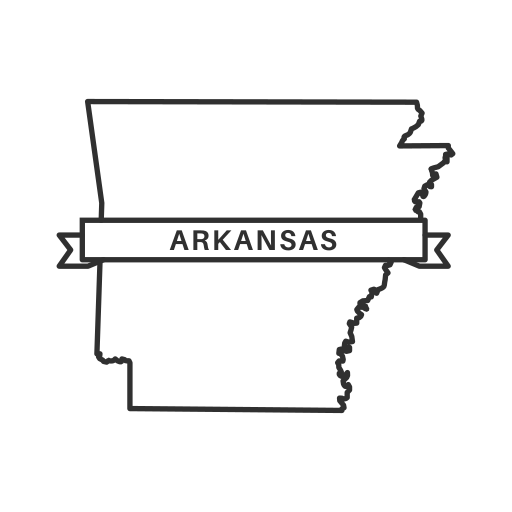Arkansas Debt Statistics 2023: Facts about Debt in Arkansas reflect the current socio-economic condition of the state.

LLCBuddy editorial team did hours of research, collected all important statistics on Arkansas Debt, and shared those on this page. Our editorial team proofread these to make the data as accurate as possible. We believe you don’t need to check any other resources on the web for the same. You should get everything here only 🙂
Are you planning to start an Arkansas LLC business in 2023? Maybe for educational purposes, business research, or personal curiosity, whatever it is – it’s always a good idea to gather more information.
How much of an impact will Arkansas Debt Statistics have on your day-to-day? or the day-to-day of your LLC Business? How much does it matter directly or indirectly? You should get answers to all your questions here.
Please read the page carefully and don’t miss any word.
On this page, you’ll learn about the following:
Top Arkansas Debt Statistics 2023
☰ Use “CTRL+F” to quickly find statistics. There are total 28 Arkansas Debt Statistics on this page 🙂Arkansas Debt “Latest” Statistics
- On average, Arkansas residents carry a credit card balance of $5,660 and 55% of Arkansans have student loan debt, $26,799 worth to be precise.[1]
- According to Education Data Initiative, $13.0 billion in student loan debt belongs to Arkansas residents.[2]
- According to Credit Summit, the average Arkansan has $1,580 in personal debt, plus $128,842 of mortgage debt for homeowners.[1]
- Approximately 37% of Arkansans, compared to 29% of Americans overall, carry debt of some kind.[3]
- In Arkansas, 23% of residents in communities of color and 19% of residents of towns with a majority of white residents have medical debt that is being collected.[3]
- 2.9% of families with full insurance and 8.5% of those without full insurance reported having substantial medical debt burdens.[4]
- In Arkansas, students who graduated from public schools during the 2013-2014 had more debt on average than those who graduated from private schools.[5]
- Families with a net worth of between $250,000 and $499,999 and 500,000 or more were among the lowest rates of having a large medical debt load, at 1.5% and 0.7%, respectively.[4]
- Debt-to-asset levels for the sector are forecast to improve from 13.56 percent in 2021 to 13.05 percent in 2022.[6]
- The proportion of medical debt in collections is greatest in Sevier County, Southwest Arkansas, at 31%.[3]
- 19% of families in both categories, including those above and below the poverty line, reported having medical debt, therefore there was no difference in this statistic.[4]
- According to the SIPP, 19% of US families had medical debt in 2017—defined as medical expenses that individuals couldn’t afford to pay up front or at the time they got treatment.[4]
- Compared to 30.8% of families without comprehensive insurance, 16.2% of those having full coverage for all members for the whole year incurred medical debt.[4]
- Farm sector debt is forecast to increase by $27.8 billion (5.9%) in 2022 to $501.9 billion in nominal terms but it is forecast to fall by 0.4% when adjusted for inflation.[6]
- Families with some college but no degree at the highest level of education had a 26.2% higher likelihood of having medical debt.[4]
- Less than 10% of defendants in debt collection actions from 2010 to 2019 had legal representation, compared to virtually all plaintiffs, according to research on the cases from 2010 to 2019.[7]
- $33,333 is the average student loan debt in Arkansas, and 51.2% of them are under the age of 35.[2]
- In the last ten years, courts have settled more than 70% of debt collection cases with default judgments in favor of the plaintiff.[7]
Arkansas Debt “Household” Statistics
- Health and economic circumstances may also influence which families have a high burden of medical debt, even though just 4% of all households reported having a high burden of medical debt.[4]
- High medical debt load is defined as debt that represents more than 20% of a household’s yearly income.[4]
- Nineteen percent of U.S. households could not afford to pay for medical care up front or when they received care in 2017, according to new U.S. Census Bureau data on the burden of medical debt.[4]
- When any family member spent time in the hospital, the proportion of households with medical debt increased to 31.3% from 15.8% when there were no family members who spent time in the hospital.[4]
Arkansas Debt “House” Statistics
- Households with children under 18 were 24.7% more likely to have medical debt than those without children, who were 16.5% more likely.[4]
- Regionally, 22.1% of south households reported having medical debt, compared to 15.2% of west households and 15.6% of northeast families.[4]
- 25.4% of homes with the youngest child under the age of five had medical debt, little over a quarter of all households.[4]
- About 31% of households with a member in fair or poor health had medical debt compared to 14.4% of those with no members in fair or poor health.[4]
Arkansas Debt “Other” Statistics
- Nearly half of who lost coverage reported having serious problems paying off medical debt.[8]
- Debt collection lawsuits occupied an increasing percentage of civil dockets from an estimated 1 in 9 civil cases to 1 in 4 from 1993 to 2013, more than doubling from less than 1.7 million to nearly 4 million.[7]
Also Read
- Alabama Debt Statistics
- Alaska Debt Statistics
- Arizona Debt Statistics
- Arkansas Debt Statistics
- California Debt Statistics
- Colorado Debt Statistics
- Connecticut Debt Statistics
- Delaware Debt Statistics
- Florida Debt Statistics
- Georgia Debt Statistics
- Hawaii Debt Statistics
- Idaho Debt Statistics
- Illinois Debt Statistics
- Indiana Debt Statistics
- Iowa Debt Statistics
- Kansas Debt Statistics
- Kentucky Debt Statistics
- Louisiana Debt Statistics
- Maine Debt Statistics
- Maryland Debt Statistics
- Massachusetts Debt Statistics
- Michigan Debt Statistics
- Minnesota Debt Statistics
- Mississippi Debt Statistics
- Missouri Debt Statistics
- Montana Debt Statistics
- Nebraska Debt Statistics
- Nevada Debt Statistics
- New Hampshire Debt Statistics
- New Jersey Debt Statistics
- New Mexico Debt Statistics
- New York Debt Statistics
- North Carolina Debt Statistics
- North Dakota Debt Statistics
- Ohio Debt Statistics
- Oklahoma Debt Statistics
- Oregon Debt Statistics
- Pennsylvania Debt Statistics
- South Carolina Debt Statistics
- South Dakota Debt Statistics
- Tennessee Debt Statistics
- Texas Debt Statistics
- Utah Debt Statistics
- Vermont Debt Statistics
- Virginia Debt Statistics
- Washington Debt Statistics
- West Virginia Debt Statistics
- Wisconsin Debt Statistics
- Wyoming Debt Statistics
- District of Columbia Debt Statistics
How Useful is Arkansas Debt
One argument in favor of Arkansas Debt is that it can be a valuable tool for investing in the state’s infrastructure, education, and healthcare systems. By borrowing money, the state can afford to improve its roads, bridges, and public transportation networks, which in turn can boost economic growth and create jobs. Debt can also be used to enhance educational programs, expand access to healthcare services, and support other initiatives that benefit the overall well-being of the state’s residents.
Proponents of Arkansas Debt also point out that borrowing at low interest rates can actually be a savvy financial decision. By leveraging debt to make strategic investments, the state can potentially generate greater returns than the cost of borrowing. This can help stimulate economic growth and improve the quality of life for Arkansans, while also ensuring that the state remains competitive in the global marketplace.
On the other hand, critics of Arkansas Debt argue that excessive borrowing can lead to financial instability and burdensome debt servicing costs. As debt levels increase, so do the interest payments, which can eat into the state’s budget and limit its ability to fund essential services. This can create a vicious cycle where more debt is taken on to cover existing obligations, leading to even higher debt levels and greater financial strain.
Opponents of Arkansas Debt also highlight the risks associated with relying too heavily on borrowing to fund government operations. Economic shocks, such as a recession or natural disaster, can quickly turn manageable debt levels into a full-blown crisis if the state is unable to meet its debt obligations. This can have serious consequences for the state’s credit rating, making it more expensive to borrow in the future and further straining the state’s finances.
Ultimately, the usefulness of Arkansas Debt depends on how it is managed and the purposes for which it is used. If debt is incurred responsibly and strategically, it can be a valuable tool for promoting economic development and improving the quality of life for residents. However, if debt levels spiral out of control and result in unsustainable financial burdens, the state could find itself in a precarious situation with limited options for resolving the issue.
As policymakers grapple with the question of how best to manage Arkansas Debt, careful consideration must be given to the long-term implications of borrowing and the potential risks involved. By striking a balance between leveraging debt for strategic investments and maintaining fiscal responsibility, the state can ensure that debt remains a useful tool for advancing its goals and serving the needs of its residents.
Reference
- mycreditsummit – https://www.mycreditsummit.com/debt-consolidation/arkansas/
- educationdata – https://educationdata.org/student-loan-debt-by-state
- ualrpublicradio – https://www.ualrpublicradio.org/local-regional-news/2022-01-27/arkansas-groups-erase-millions-in-medical-debt
- census – https://www.census.gov/library/stories/2021/04/who-had-medical-debt-in-united-states.html
- ballotpedia – https://ballotpedia.org/Higher_education_in_Arkansas,_1993-2016
- usda – https://www.ers.usda.gov/topics/farm-economy/farm-sector-income-finances/highlights-from-the-farm-income-forecast/
- pewtrusts – https://www.pewtrusts.org/en/research-and-analysis/reports/2020/05/how-debt-collectors-are-transforming-the-business-of-state-courts
- cbpp – https://www.cbpp.org/research/health/states-experiences-confirm-harmful-effects-of-medicaid-work-requirements
